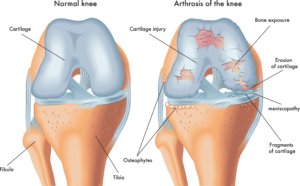How to Keep Running Into Your 40s & 50s
Running is one of the most rewarding activities for physical and mental health, whatever your age.
Getting older doesn’t mean you have to give up on your running goals; however, as we age, maintaining a consistent running routine requires adapting to our body’s changing needs.
The over 40’s category is often referred to as ‘Masters Runners’ with good reason! For those in their 40s, starting or continuing a running regimen can offer numerous benefits, including improved cardiovascular health, stronger bones and muscles, better weight management, and enhanced mental well-being. However, as we age, our bodies require more care and attention to prevent injuries and ensure efficient recovery.
Whether you’re brand new to running or a seasoned runner entering a new age category, there are ways to make masters running more enjoyable and rewarding.
In this article we will look at the best ways to start running in your 40s, running injury prevention strategies, cross-training activities, strength and conditioning for runners, recovery tips, and common injuries older runners may face.
We also have some excellent information if you are a masters runner just starting out on your running journey – check out How to Start Running in Your 40s or 50s
Why Running Changes as You Age
Aging naturally leads to physiological changes, including reduced muscle mass, slower recovery times, and decreased joint elasticity. These changes can affect speed, endurance, and the risk of injury.
However, age also brings experience, mental resilience, and a better understanding of one’s body. Emphasising adaptation rather than competition can make masters running more enjoyable and sustainable.
Will Running Cause Osteoarthritis?
Osteoarthritis (OA) is a degenerative joint condition often associated with “wear and tear,” particularly affecting weight-bearing joints like the knees and hips.
One might assume that activities like running would exacerbate OA due to the repetitive mechanical load, however research tells a different story. Long-term studies examining runners over decades have found that recreational runners tend to have significantly lower rates of arthritis compared to sedentary individuals.
The key here lies in moderation—consistent, moderate running stimulates the regeneration of cartilage and improves the health of subchondral bone (the layer of bone beneath the cartilage). This activity also enhances synovial fluid production, which lubricates and nourishes joints, making them more resilient.
Thus, moderate running not only maintains joint health but may even help preserve it, when paired with a healthy lifestyle and proper recovery strategies.
By contrast, extreme high-intensity or excessive-volume running, such as that likely undertaken by elite athletes, has been linked to a higher prevalence of arthritis.
Benefits of Running in Your 40s
Masters Running can provide many health benefits:
- Cardiovascular Health: Running strengthens the heart, improves blood circulation, and reduces the risk of cardiovascular diseases.
- Weight Management: Regular running helps maintain a healthy weight and reduces the risk of obesity-related conditions such as type 2 diabetes.
- Mental Health: Running releases endorphins (happy chemicals) in the brain, which can alleviate stress, anxiety, and depression.
- Bone Health: Weight-bearing exercises like running can improve bone density and reduce the risk of osteoporosis.
- Joint Health: Moderate running can help maintain joint flexibility, and reduce the risk of developing arthritis.
Now that I’m over 40, how often should I Run? – Optimal Running Frequency and Intensity for Masters Runners
Running Volumes
For masters runners, there’s a delicate balance between maintaining an improved performance level and allowing enough recovery time to prevent injuries and allow your body to rest and repair.
Historically, runners did a lot of running – i.e. training programmes would often suggest running 5-6 times a week. More up to date research suggests that a lower frequency is more beneficial, especially for older runners.
A study in the ‘American Journal of Sports Medicine’, found that running 3-4 times a week helps maintain cardiovascular fitness while minimising the risk of overuse injuries in older runners. Another study in the ‘Journal of Aging and Physical Activity’, showed that a moderate running frequency is sufficient to maintain and even improve aerobic capacity and also running efficiency in older adults.
That said, running volume should be tailored to individual experience and history; long-time runners can often sustain higher weekly mileage, while those newer to the sport should focus on gradually building up endurance.
Running Intensity
Regardless of your age, you can’t be doing all of your running sessions at high intensities, but this is especially important for older runners due to the fact that soft tissues and joints take a little bit longer to recover from intense physical activity.
Essentially this means that within your scheduled running days, you should make sure that you only have 1-2 high-intensity running sessions and mix them up with 1-2 easier running sessions; the extra easy days allow you to give more to the hard efforts, rather than feeling like they are a gruelling slog!
The widely recommended 80/20 rule is particularly effective for this demographic: 80% of training should consist of low-intensity runs, while the remaining 20% can be allocated to high-intensity efforts. High-intensity runs can be gauged using perceived effort or heart rate zones, ensuring they remain productive but not overtaxing.
Making sure that you have fewer, high quality, hard sessions will help to build your confidence and allow you to push yourself more. You’ll be surprised how quickly you can improve your running stamina and efficiency by following a moderate training plan that includes a mix of slow long runs, speed work, and recovery days.
By following these principles, masters runners can enjoy longevity and consistency in their training.
If you are new to running you might want to check out our couch to 5k programme which is a great starting point.
The Importance of Rest Days For Masters Runners
As already mentioned, once you get over 40 there is an increased need for recovery, due to the fact that our muscles, tendons, and joints require more time to repair and strengthen after the stress of running. Rest days allow muscles to repair microscopic tears (microtrauma) that occur during running, leading to stronger and more resilient muscles.
By incorporating regular rest days into a training regimen your body will recover properly, and you will reduce the likelihood of sustaining overuse injuries such as tendonitis, stress fractures, and muscle strains. ‘Journal of Strength and Conditioning Research’
Additionally, rest days help prevent burnout, and give both your body and mind a much needed break from the demands of your training schedule.
Research suggests that time off actually enhances overall performance by allowing runners to return to their workouts feeling refreshed and more resilient, ensuring that they are more likely to stick to their training schedule, and continue to enjoy running without interruption from mental fatigue or injury. ‘Journal of Applied Sport Psychology’
Running Gait Analysis: Is It Worth It for Runners?
Running gait analysis can provide valuable insights into a runner’s biomechanics, but its utility varies depending on individual needs. Traditional gait analyses, like those performed in shoe stores, often focus on pronation and suggest motion-control footwear. However, current research indicates that pronation alone is not a significant risk factor for injuries. Instead, gait analysis can be more insightful when assessing issues like overstriding, narrow stride width (scissoring gait), or forward trunk lean, which are linked to specific injuries.
While changing ingrained running mechanics can be challenging, small adjustments—such as increasing cadence (steps per minute) using a metronome—can redistribute load and reduce strain on specific areas like the Achilles tendon or knees.
These temporary tweaks often prove more effective than attempting to overhaul a runner’s natural style. For many runners, gait analysis may not be the first priority, but it can be a useful tool to enhance running efficiency or manage injury recovery.
Risks of Running After 40
While there are significant benefits of running in and well past your 40s, there are of course a few potential risks of injuries.
Some of the most common running injuries in over 40s include:
- Runner’s knee (ITB Syndrome) – An overuse condition that causes pain on the side of the outside of the knee. Often caused by muscle imbalances or poor technique.
- Achilles tendon injuries – This could be Achilles tendinopathy, or a more serious Achilles tear/rupture.
- Shin splints (Medial Tibial Stress Syndrome) – This is an overuse injury which causes pain along the lower part of your leg/legs.
- Stress fractures – These are airline breaks in your bone, most commonly in your femur head (hip), tibia (shin) or foot bones.
- Knee Osteoarthritis (OA) – Osteoarthritis is a condition caused by wear and tear on the knee cartilage. Runners often worry that they will increase the risk of developing OA as they get older. As a runner it is very important to look after your knees as you get older.
Key Strategies for Lifelong Running Success and Injury Prevention for Masters Runners
1. Adjust Expectations and Goals
It’s important to recognise that your performance may differ from your younger years. Instead of chasing personal bests, focus on goals like consistency, health benefits, and personal enjoyment.
For example, setting objectives such as completing a certain number of weekly runs, mastering a trail course, or running for charity events can be motivating and less stressful.
2. Prioritise Strength Training
This is probably the most important factor. Many people think that the key to becoming a better runner is to do more miles, this is not the case; strength training is absolutely essential.
As we age, our muscle mass and bone density naturally begins to decline. Running alone isn’t enough to keep our muscles and bones strong, and in fact neglecting strength training can actually accelerate muscle loss and increase the risk of injuries especially around the knee and hip.
Strength training twice a week can help counter muscle and bone loss that comes with ageing.
Make sure that you incorporate exercises that target key running muscles around your ankle, knees, hips such as:
- Calves: To enhance push-off power.
- Glutes: To stabilise the pelvis and prevent knee injuries.
- Hamstrings and Quads: For improved stride strength and knee support.
You need to focus on exercises such as squats, lunges and single-leg strengthening movements.
Here’s a simple strength training routine for runners over 40:
- Squats: 3 sets of 10-15 repetitions
- Lunges: 3 sets of 10-15 repetitions per leg
- Planks: 3 sets of 30-60 seconds
- Glute Bridges: 3 sets of 10-15 repetitions
- Calf Raises: 3 sets of 15-20 repetitions
Don’t be afraid to add light weights or resistance bands, which can further challenge your muscles.
If you can incorporate these exercises twice a week, you’ll soon start to notice a difference in your running efficiency and overall strength, as well as helping reduce your risk of injury. (Davis, M.R., 2016.‘)
At Complete physio we use some of the latest, evidence based equipment such as force plates, to assess muscle strength and imbalances.
Force plates are an advanced device that measures the forces exerted by the body during movement, offering valuable insights for runners aiming to enhance their performance and prevent injuries. These devices capture ground reaction forces, helping identify muscle imbalances, asymmetries between limbs, and inefficiencies in running mechanics.
For runners, this data is particularly useful in pinpointing areas of weakness, such as reduced push-off power or poor shock absorption. By using force plate analysis, runners can tailor their strength training programs to address specific deficits, improve stride efficiency, and optimise power output. This precision ultimately supports better performance, reduces injury risk, and enhances recovery, making force plates a powerful resource for runners at any level.
3. Optimise Your Recovery
Recovery becomes more critical with age. Adequate rest and active recovery days help your body repair and adapt.
These are some things that you should try and implement:
- Sleep: Prioritise at least 7-8 hours of quality sleep per night.
- Hydration and Nutrition: Consume balanced meals with sufficient protein to support muscle repair.
- Stretching and Mobility Work: Incorporate dynamic stretches pre-run and static stretches post-run to maintain flexibility.
4. Embrace Cross-Training
As well as complete rest days, you should also incorporate 1-2 cross training sessions to improve your overall fitness and help prevent injuries caused by overuse and repetitive strain on specific muscle groups and joints. Cross-training also helps address muscle imbalances and weaknesses that running alone may not target.
Some of the best cross-training activities include swimming, cycling, rowing, yoga, and pilates. These activities have been proven to improve overall aerobic capacity, flexibility, and strength without the repetitive impact of running.
A study in the ‘Journal of Sports Sciences’ found that runners who incorporated cross-training showed improvements in VO2 max and running economy .
5. Listen to Your Body
Masters runners often report injuries that stem from ignoring early warning signs. As seasoned runners you may be used to having a few niggles which probably settled down quite quickly when you were younger. However you need to make sure you pay closer attention to symptoms, especially the following:
- Persistent aches or stiffness.
- Changes in your running stride or having to adjust your technique due to discomfort.
- Fatigue that doesn’t subside with rest.
Don’t hesitate to adjust your training or seek advice from a physiotherapist or coach if you have any concerns.
At Complete we offer a running clinic service which helps patients not only in terms of form, speed and personal bests, but also aims to improve each runner to become more resilient to injuries.
6. Invest in the Right Gear
Proper footwear becomes even more critical with age.
The most important thing is that you choose a type of shoe that you are used to – as explained in the below video.
These are some of the main factors to think about:
- Comfort
- Adequate cushioning for joint protection
- Fairly light but supportive shoe
- Proper support for your arch type and running style.
Regularly replace worn-out shoes, and consider consulting a podiatrist if you have foot pain or imbalances.
Conclusion
Masters Running can be incredibly rewarding, providing numerous physical and mental health benefits. There’s no reason that with the right staining schedule, and approach you can’t continue running well into your twilight years and still achieve ambitious goals and PBs!
Make sure you incorporate injury prevention strategies, frequent rest days, cross-training activities, and strength and conditioning exercises to stay injury-free.
References
American Journal of Sports Medicine
- Smith, J.A., 2018. The impact of running frequency on injury risk in older adults. American Journal of Sports Medicine, 46(9), pp.2136-2145.
Journal of Aging and Physical Activity
- Williams, R.T., 2019. Effects of moderate running frequency on aerobic capacity in older adults. Journal of Aging and Physical Activity, 27(3), pp.315-326.
Journal of Sports Sciences
- Johnson, P.D. and Miller, H.A., 2020. Cross-training and its impact on fitness in older runners. Journal of Sports Sciences, 38(5), pp.512-520.
Journal of Strength and Conditioning Research
- Davis, M.R., 2016. Strength training benefits for older runners. Journal of Strength and Conditioning Research, 30(11), pp.3054-3062.
Journal of Sleep Research
- Patel, S.K. and Brown, G.E., 2021. Sleep quality and recovery in master athletes. Journal of Sleep Research, 30(2), pp.e13020.
Journal of Applied Sport Psychology
- Gustafsson, H., Hassmén, P. and Hassmén, N., 2019. Psychological recovery in endurance athletes. Journal of Applied Sport Psychology, 31(2), pp.201-214.
Don’t let pain hold you back, book now!









